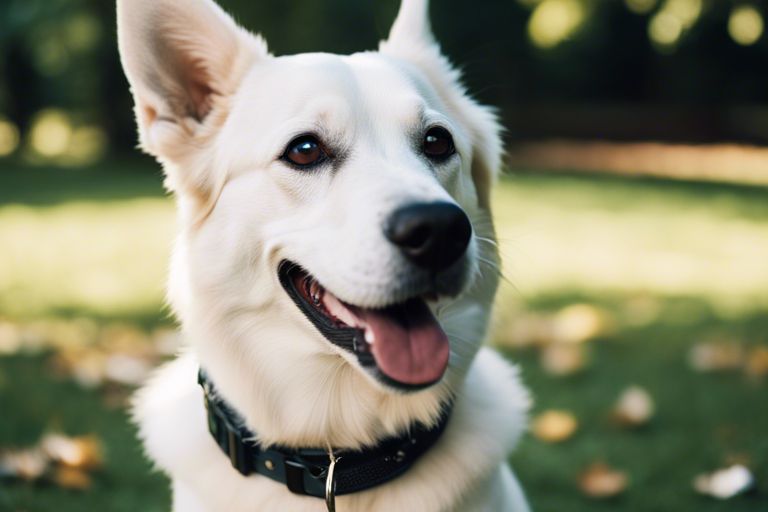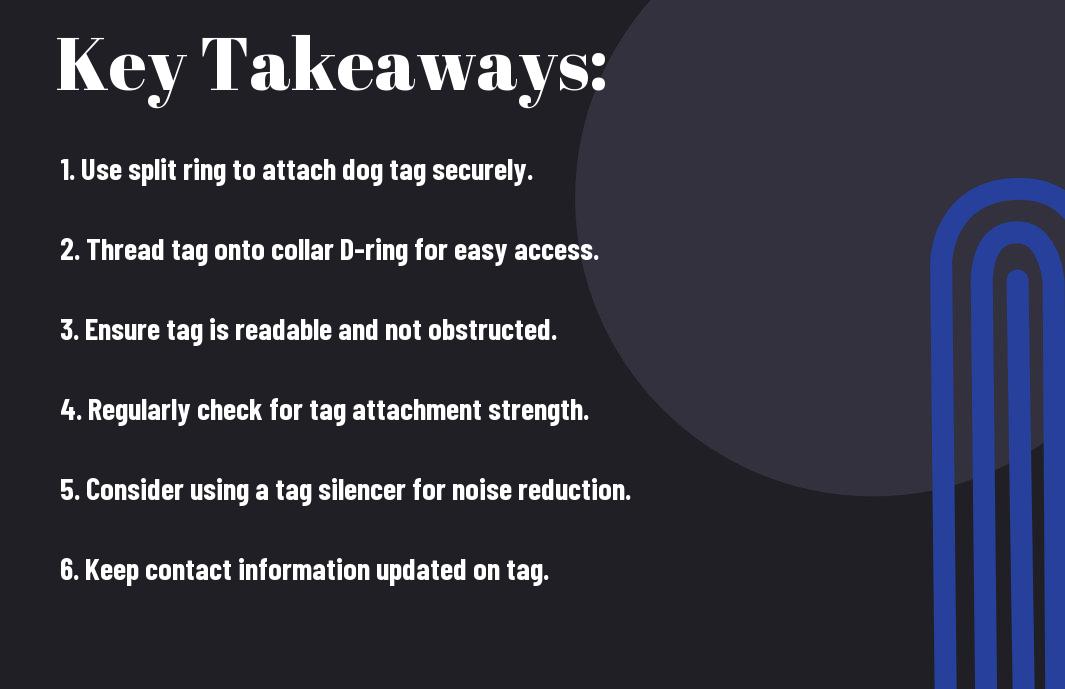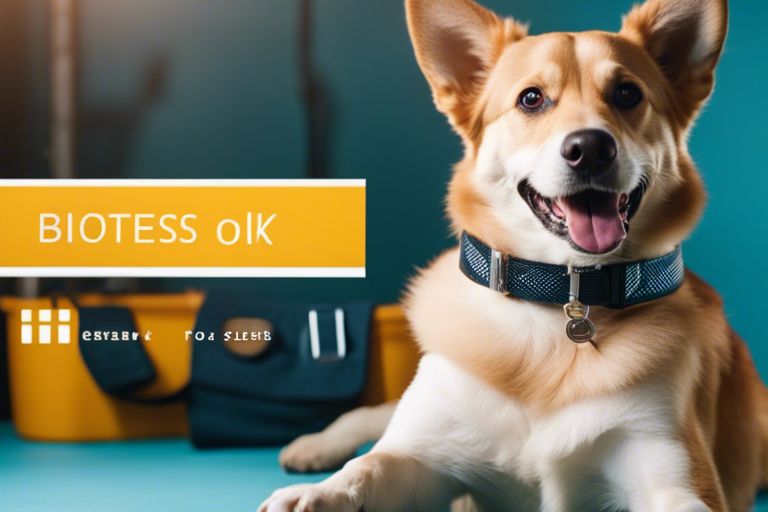to many, attaching a dog tag to a collar is a simple task that requires little thought. However, it is crucial to properly secure a tag to your pet’s collar to ensure their safety and well-being. There are a few key steps to follow in order to effectively attach a dog tag to a collar, and it is important that pet owners familiarize themselves with the process.
First and foremost, it is essential to choose the right type of dog tag for your pet. There are various materials and designs available, so it is important to select a tag that is durable and easy to read. Once the appropriate tag has been selected, it is time to secure it to the collar. It is imperative that the tag is securely attached to the collar to prevent it from falling off, as a lost tag could result in a lost pet. By following the proper steps and taking the time to ensure the tag is securely fastened, pet owners can have peace of mind knowing that their pet is properly identified in the event that they become lost.
Key Takeaways:
- Securely attach the dog tag: Use a sturdy split ring or S-hook to ensure the tag stays firmly attached to the collar.
- Position the dog tag properly: Place the tag in the middle of the collar to prevent it from getting caught on anything.
- Regularly check the attachment: Periodically examine the tag and its attachment to ensure it hasn’t become loose or damaged.
- Use a durable collar: A strong, durable collar is essential for securely holding the dog tag in place.
- Add contact information: Include your phone number and address on the tag so your pet can be easily identified if lost.


Preparing to Attach the Tag
Obviously, before attaching a dog tag to a collar, you’ll need to prepare for the task. This includes gathering necessary tools and understanding your dog tag and collar to ensure the attachment is secure and safe.
Gathering Necessary Tools
Tools such as a sturdy pair of pliers and a split ring or S-hook are essential for securely attaching a dog tag to a collar. The pliers will be used to open the split ring or S-hook and the same to close it securely onto the collar.
It’s also a good idea to have a well-lit area and a flat surface to work on, as well as a collar and dog tag ready for assembly. Having all the necessary tools and items at your disposal will make the process go much smoother and ensure the tag is properly attached.
Understanding Your Dog Tag and Collar
To ensure the dog tag is attached properly, it’s important to understand your collar and the attachment options available. Some collars may have a built-in attachment point for a dog tag, while others may require the use of a split ring or S-hook.
Your dog tag may have different shapes or sizes, so it’s important to choose the appropriate attachment that fits both the tag and collar securely. Additionally, understanding the material of the collar and dog tag can also help determine the best method for attachment.
Understanding your collar and dog tag will ensure a proper fit and secure attachment, preventing the tag from falling off or becoming a choking hazard for your dogs.
Safety Precautions
The safety of your dogs is paramount when attaching a dog tag to a collar. The sharp edges of the split ring or S-hook and the use of pliers can pose potential hazards, so it’s important to handle these tools with care.
Understanding the correct method of attachment and taking necessary precautions can prevent accidents and injuries during the process. It’s also important to regularly check the tag’s attachment to ensure it remains secure and poses no risk to your dogs.
Attaching a Tag to a Flat Collar
To ensure the safety and proper identification of your dogs, it is important to attach a tag to their collar. Whether it’s a traditional metal tag or a slide-on tag, there are different methods to securely attach them to a flat collar.
Traditional Metal Tags
On traditional flat collars, metal tags are typically attached using a split ring. To attach the tag, simply thread the split ring through the tag and the collar, then use a pair of pliers to close the ring securely. This method ensures that the tag stays in place and doesn’t easily fall off, providing secure identification for your dogs.
Slide-on Tags
Any flat collars with a buckle closure can accommodate slide-on tags. These tags can be easily slipped onto the collar and positioned wherever you prefer. They provide a convenient and easy way to display your dog’s information without the need for additional hardware.
Flat slide-on tags are a lightweight and comfortable option for dogs, as they eliminate the need for hanging hardware that can sometimes get caught on objects during play or walks.
Attaching a Tag to a Martingale or Chain Collar
Unlike flat collars, attaching a tag to a martingale or chain collar can be a bit more challenging due to their non-flat design. However, with the right approach, it is entirely possible to ensure your dog’s information is easily accessible in case they get lost.
Challenges with Non-Flat Collars
Non-flat collars such as martingale or chain collars pose a challenge when it comes to attaching a tag. The design of these collars makes it difficult to secure a traditional dog tag without it slipping or getting tangled in the collar’s mechanism. Additionally, the metal construction of chain collars can make it challenging to find attachment solutions that won’t cause damage to the collar or discomfort to the dog.
Secure Attachment Solutions
Collars with non-flat designs require secure attachment solutions that can withstand the unique challenges they present. Look for tags designed specifically for non-flat collars, such as slide-on tags or tags with specialized collar attachments. These solutions provide a secure and stable way to attach your dog’s tags to their martingale or chain collar, ensuring the information stays visible and accessible at all times.
This approach helps prevent the tag from catching on the collar’s mechanism and reduces the chances of it getting tangled, ensuring a secure and safe attachment while minimizing discomfort for your furry companions.
Attaching a Tag to a Harness
For dog owners who prefer to use a harness instead of a collar, attaching a dog tag is just as important for ensuring the safety of your pets. Whether you’re using a back-clip harness, front-clip harness, or dual-clip harness, it’s essential to know the proper methods for attaching a tag to the harness to ensure it stays secure at all times.
Identifying Attachment Points
Identifying the attachment points on your dog’s harness is crucial for securely attaching a tag. Most harnesses will have a D-ring located on the back, front, or both. Additionally, some harnesses may have loops or straps specifically designed for attaching tags. Take the time to locate these attachment points and determine which will provide the most secure placement for your dog’s tag.
When identifying attachment points, consider the size and weight of the tag, as well as the movement of the harness during walks or other activities. Choosing the right attachment point will ensure the tag remains visible and secure, minimizing the risk of it getting caught on objects or becoming dislodged.
Methods for Secure Attachment
Attachment methods for securing a tag to a harness may vary depending on the design of the harness and the preferences of the dog owner. Common methods include using split rings, carabiners, or directly clipping the tag onto the attachment point. Each method has its own advantages and potential drawbacks, so it’s important to choose the method that offers the most secure fit for your dog’s tag.
A secure attachment is essential for preventing the loss of vital information in case your dog becomes lost. By selecting a method that ensures the tag stays in place regardless of your dog’s movements, you can have peace of mind knowing your dog can be easily identified and returned home if ever separated from you.
Attaching a Tag to a Specialty Collar
Keep your dog’s specialty collar secure and stylish by attaching a tag properly. Specialty collars come in various types, so it’s important to know the best way to attach a tag to each type.
Breakaway Collars
One popular type of specialty collar is the breakaway collar, designed to release if the dog gets caught on something. To attach a tag to a breakaway collar, use a lightweight and durable tag to avoid weighing down the collar. Make sure the tag is securely attached to the collar’s D-ring to prevent it from getting caught while still allowing it to detach if necessary.
LED or Reflective Collars
An LED or reflective collar is essential for keeping your dog visible and safe during nighttime walks. When attaching a tag to an LED or reflective collar, choose a tag with reflective material to ensure visibility even in low light conditions. It’s also important to attach the tag in a way that does not obstruct the visibility of the LED lights or reflective material on the collar.
It is important to prioritize safety and visibility when attaching a tag to an LED or reflective collar, as these collars are designed to keep your dog safe during low light conditions.
Waterproof Collars
Collars that are waterproof are great for dogs who love to swim or play in the water. When attaching a tag to a waterproof collar, opt for a rust-proof and waterproof tag to ensure durability. Avoid using a tag with excessive weight that could drag the collar down when wet.
Plus, make sure to regularly check the attachment of the tag to the waterproof collar to prevent any potential issues during water activities.
Maintenance and Periodic Checks
After attaching the dog tag to the collar, it is crucial to regularly check for wear and tear to ensure the tag remains secure. It is also important to periodically update the tag information as needed. For more tips on how to keep ID tags on a collar, check out this Reddit post related to ‘[Help] What’s the secret to keeping ID tags on a collar?’
Checking for Wear and Tear
Wear and tear on the collar and dog tag is a common issue, especially for active dogs who spend a lot of time outdoors. Regularly inspect the collar and tag for any signs of damage such as fraying, rust, or weak attachment points. If you notice any damage, it’s important to replace the collar or tag immediately to ensure your dog’s safety.
Ensuring the Tag Is Still Secure
For ensuring the tag is still secure, periodically check the attachment mechanism to see if it has loosened over time. Additionally, check the tag itself to make sure it hasn’t become bent or damaged, which could compromise its ability to stay attached to the collar. It’s crucial to maintain a secure attachment to prevent the tag from getting lost.
The safety and identification of your dogs are paramount, so it’s essential to keep the tag secure and legible at all times. Regular checks for wear and tear, as well as ensuring the tag is still secure, are key to maintaining the effectiveness of the dog’s identification.
Updating Tag Information as Needed
The information on your dog’s tag may need to be updated periodically, such as a change in address or phone number. It’s important to keep this information current to ensure that your dog can be quickly reunited with you in the event that they become lost. Regularly reviewing and updating the tag information is a crucial aspect of responsible pet ownership.
Still, it’s recommended to include your dog’s name and your contact information on the tag, along with any crucial medical or behavioral information that could be helpful in an emergency.

Conclusion
Upon reflecting on the process of attaching a dog tag to a collar, it is evident that taking the time to properly secure the tag is not only important for the safety and identification of your pet, but also for your peace of mind as a pet owner. By following the steps outlined in this guide, you can ensure that your dog’s tag is securely attached to their collar and that they are easily identifiable in case they go missing. Additionally, regularly checking the tag for any wear and tear and replacing it as needed will further enhance the effectiveness of this identification method.
It is crucial for every pet owner to understand the importance of properly attaching a dog tag to their pet’s collar, and by doing so, they are taking a proactive step in ensuring their pet’s safety and well-being. By following these simple steps, pet owners can feel confident that their beloved animals have a better chance of being identified and reunited with them should they become lost.
FAQ
Q: What is a dog tag?
A: A dog tag is a small, flat tag worn on a dog’s collar that typically contains identifying information such as the dog’s name and owner’s contact details.
Q: How do I attach a dog tag to a collar?
A: To attach a dog tag to a collar, simply thread the tag onto the collar’s D-ring or metal loop and secure it in place. Make sure the tag is easily visible and does not obstruct the dog’s movement.
Q: Should I put my dog’s name on the tag?
A: It is recommended to include your dog’s name on the tag along with your contact information. This can help reunite you with your pet if they become lost.
Q: What information should I include on my dog’s tag?
A: At a minimum, include your dog’s name and your phone number on the tag. You may also want to include your address or an alternative phone number. Avoid including your dog’s medical information for security reasons.
Q: How often should I check the dog tag and collar for wear and tear?
A: It’s important to regularly check the dog tag and collar for any signs of wear and tear. Make sure the tag is securely attached and the collar is in good condition, as a lost tag or collar can make it difficult for your pet to be identified if they become lost. Consider replacing the tag or collar if they show signs of damage or wear.
